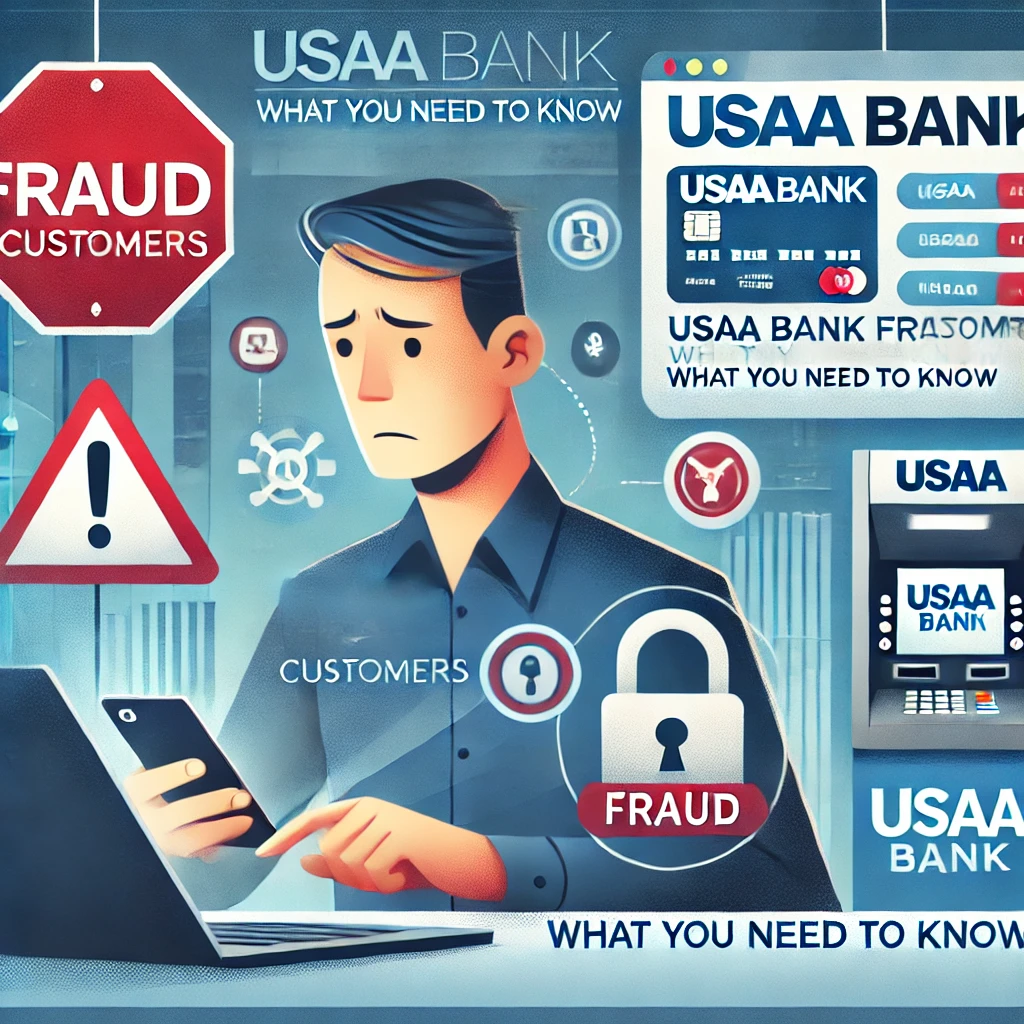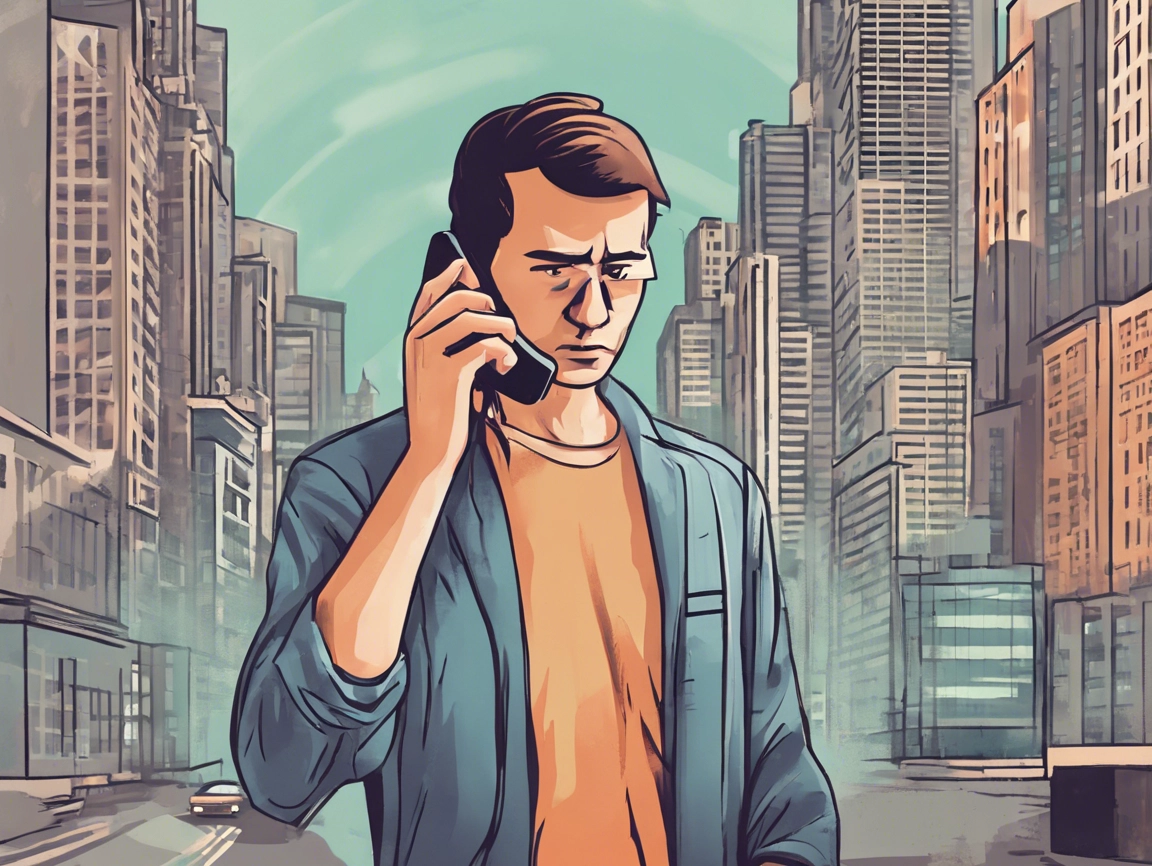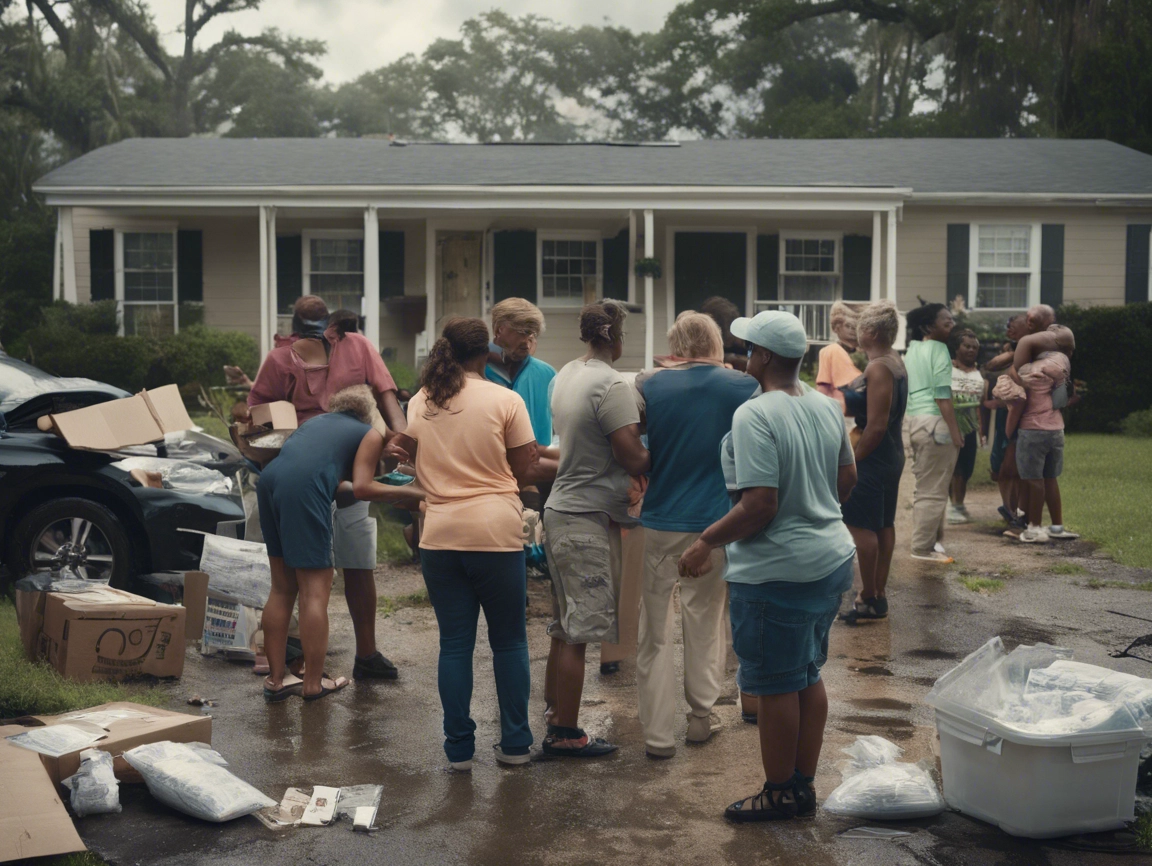The Hidden Dangers of Fake Utility Workers: When Friendly Faces Turn Fatal
Imagine being a part of a peaceful neighborhood, where everyone knows each other’s names; this is a feeling many cherish. Yet, in the midst of this familiarity, the darkest of tragedies can lurk, disguised as ordinary visits. An elderly man was brutally murdered by people posing as utility workers in Michigan, stirring fear in communities and reminding us that appearances can be deceiving.
The Incident: A Shocking Crime
The murder of Hussein Murray, a 72-year-old man, has sent shockwaves through the community of Rochester Hills, Michigan. It’s a horrific tale that speaks to broader issues of home safety and the vulnerabilities many face.
Overview of the Fake Utility Workers Murder
Hussein, who was often affectionately called Sam, was found dead in his home after allowing what he believed were utility workers to enter. This allowed two suspects to gain access to his residence, leading to a tragedy that has left many questioning the safety of their homes. How can someone so trusting become a victim in such a calculated manner?
Impersonation of Utility Workers
The suspects reportedly posed as utility workers to gain entry. They displayed fake IDs and had a phony company letterhead that convinced Murray to allow them inside. During their first visit, they were denied entry, but they returned the next day, showing a level of premeditation. There’s a lesson here about being too trusting. In this case, it cost a life.
Description of the Crime Scene
The crime scene was described as gruesome, raising serious concerns about the nature of the assault. According to reports, Murray’s wife was also tied up with duct tape during the incident. This deeply shocking detail has stirred anger and grief among residents, many of whom knew Murray as a kind and caring individual.
Chronology of Events Leading to the Investigation
The investigation began immediately after the horrific discovery of Hussein’s body. It was soon revealed that a doorbell camera had captured key moments of the crime. The first visit occurred on a Thursday night when the suspects attempted to gain entry but were turned away. They returned the next morning, when Murray unfortunately let them inside. This timeline highlights a critical aspect of the incident: the targeting of victims by the suspects. It raises questions about how we can better protect ourselves and our loved ones.
‘This is a tragedy that affects not just one family, but the entire community.’
Community Impact
Hussein Murray was not just a victim; he was a prominent member of his community. He owned a local jewelry pawn shop, where he was known to invest his time and love. This tragedy has rippled far beyond his family. His wife endured a traumatic event alongside him, and the community is in shock. Residents are left asking—what can we do to ensure our safety? How do we stop such tragedies from repeating?
Data Summary
To better understand this tragic event, here’s a summary of the key data:
| Detail | Information |
| Victim’s Age | 72 |
| Incident Location | Rochester Hills, MI |
| Distance of Suspect Arrest | 700 miles away in Louisiana |
In light of this tragedy, the local sheriff has urged residents to be more cautious. Always verify the identities of individuals seeking entry into homes, particularly those claiming to be utility workers. The pain felt from this incident can serve as a stark reminder to all.
Community Response: Shock and Vigilance
The recent incident in Rochester Hills has left many residents feeling uneasy. As the shocking details came to light regarding the murder of 72-year-old Hussein Murray, neighbors and community members brimmed with disbelief and concern. It’s not every day that such a tragedy strikes what is typically considered a safe suburban neighborhood. After all, many locals live with the assurance that they are protected from harm. As one local neighbor poignantly expressed, ‘We always thought we were safe here.’
Reactions of Neighbors and Community Members to Fake Utility Workers Murder
The community’s response has been immediate and heartfelt. Neighbors gathered in small groups, discussing their perceptions of safety and the unexpected vulnerability they felt after the incident. The sense of shock resonated throughout the area. It’s remarkable how swiftly fear can dissolve the comfort of day-to-day life.
- Many have reported locking their doors more frequently.
- Community watch groups are seeing a surge in participation.
- Residents are openly expressing their concerns about home safety.
Conversations revolving around the incident have led to a newfound understanding of vigilance. Residents seem to grasp that safety extends beyond their four walls. The attack on Murray and the alarming tactics of the suspects, who posed as utility workers, have shaken the very foundation of their sense of security.
Statements from Local Authorities on Neighborhood Safety
In light of this incident, local authorities have stepped up to offer reassurance. The sheriff’s department has issued statements emphasizing the need for residents to exercise caution. They encourage all community members to verify the identity of anyone who comes to their door. Simple instructions, like checking ID and asking for company documentation, are now more critical than ever. After such an unsettling event, who wouldn’t hesitate to open their door without assurance?
It’s worth noting that the sheriff highlighted the importance of community awareness. The message is clear: vigilance is not only a personal responsibility but a collective one. Authorities have been vocal about how this event might be a wake-up call for Rochester Hills to reevaluate its safety measures.
Encouragement for Neighbors to Look Out for Each Other
One of the more uplifting responses has been the rallying call for neighbors to support one another. Initiatives for neighborhood watch programs have emerged, encouraging residents to connect and share information. The idea is simple yet powerful: by working together, they can create a more secure environment.
- Residents are urged to report suspicious activities.
- Community safety meetings have increased significantly.
The aftermath of this shocking event could foster a tight-knit community spirit. Will they rise to the challenge and protect each other? Efforts are already underway.
Impact on Community Morale and Fears
The morale in Rochester Hills is undoubtedly shaken. The tranquility that was once commonplace has been disrupted. Residents express fears about the future, questioning whether their homes are still safe sanctuaries. The ripple effects of this incident are immense, extending beyond the immediate tragedy.
As discussions flourish around home safety, there’s also an air of resilience. Communities often rebound from crises, and Rochester Hills might very well do the same. They are determined to regain control, even amidst fear. The city, with its population of approximately 75,000, is now at a crossroads. Will they adapt and become more vigilant, or will fear linger?
| Statistic | Details |
| Population of Rochester Hills | Approximately 75,000 |
| Increase in Community Meetings | Significant rise following the incident |
The community has transitioned from shock to processing their emotions. Engaging in meaningful dialogues about safety is essential. The road ahead may be challenging, but there is hope. In these trying times, vigilance will be the new mantra for the residents of Rochester Hills.
The Impact of Scams and Home Invasion
Scams targeting the elderly have been on the rise in recent years. Many of these scams take advantage of their perceived vulnerability. The unfortunate reality is that elderly individuals often find themselves manipulated by those who seem trustworthy. Such scams can range from fake charity requests to fraudulent home repairs. Each incident highlights the urgent need for awareness and precaution among our senior citizens.
Common Scams Targeting the Elderly
Some of the most common scams include:
- Telemarketing Scams: Unscrupulous criminals call, pretending to offer valuable services or products.
- Door-to-Door Scams: Some individuals pose as utility workers, much like the tragic incident involving Hussein Murray, who was killed by intruders pretending to be offering services.
- Online Scams: Elderly individuals may fall for phishing emails, leading them to disclose personal information.
Statistics on Home Invasions
The statistics concerning home invasions are startling. Approximately 36% of home invasion victims are elderly. This highlights a significant concern. Not only are these incidents devastating physically, but they also have emotional repercussions. A home should be a safe space, yet for many, it becomes a scene of fright.
Additionally, there has been a notable rise in reported scams during the pandemic. People were isolated and more reliant on phone and online communication, making them easier targets. This shift has changed the landscape of elder scams and home invasion tactics.
Safety Tactics for Elders
It’s critical for elderly individuals to protect themselves effectively. Here are some practical suggestions:
- Verification is Key: Always confirm the identity of anyone who claims to be a service worker. A simple phone call to the company can save a life.
- Install Security Cameras: Tools such as doorbell cameras can deter intruders and provide evidence if a crime does occur. As one security expert put it, ‘A doorbell camera could save a life.’
- Community Awareness: Creating a neighborhood watch program can help keep everyone safe.
The Role of Awareness
Awareness is crucial in preventing scams and home invasions. Communities must engage in outreach. Educational programs can inform the elderly and their families about the risks. Regular discussions about recent scams can also help keep their guard up.
Moreover, neighbors should look out for each other. If something seems off, it’s essential to speak up. Reporting suspicious activities can prevent further crime.
Conclusion: Why This Matters
The impact of scams and home invasions on the elderly is profound. Each statistic represents a life affected. Victims may suffer from anxiety or fear that lingers long after the crime. It is vital for communities to come together in raising awareness and ensuring the safety of their members.
With the right strategies and community support, we can work towards preventing these devastating incidents. Protecting our elderly is a collective responsibility. Through vigilance and education, we can help create a safer environment for all.
| Type of Data | Percentage/Trend |
| Elderly victims in home invasions | 36% |
| Reported scams increase during pandemic | Rising trend |
In conclusion, while the digital landscape changes, so do the tactics of those who wish to exploit the vulnerable. Keeping abreast of these scams and ensuring the safety of elderly individuals is essential for community well-being.
Lessons Learned: Strengthening Community Ties
Building a strong community is more crucial than ever. Recent events, like the tragic murder of an elderly man in Rochester Hills, highlight the growing need for vigilance and connection among neighbors. This incident reminds us of the power of community relationships and the importance of trusting one’s instincts.
The Importance of Trusting Instincts
Trusting one’s instincts can be life-saving. In the case of Hussein Murray, who unwittingly allowed intruders into his home, it’s clear that recognizing something amiss is essential. People must be encouraged to listen to their gut feelings. If a stranger seems suspicious, it’s better to err on the side of caution than to let them in.
Strengthening Neighborhood Ties
Communities thrive when their members know and support one another. Here are some effective ideas to strengthen these ties:
- Organize Block Parties: Regular gatherings help neighbors connect. A friendly barbecue or potluck can break the ice.
- Start a Neighborhood Watch: Having a group of vigilant neighbors deters crime. According to statistics, areas with community watch programs see a notable reduction in crime rates.
- Create a Social Media Group: Use platforms like Facebook or Nextdoor to share safety tips or report suspicious activities.
These actions promote an environment where trust and camaraderie flourish. Just think – wouldn’t you feel safer knowing the people living around you?
The Role of Local Law Enforcement
Local law enforcement plays a pivotal role in community safety. The police department should engage with the public regularly. They can host meetings, share safety tips, and encourage residents to report suspicious activity. A visible police presence instills confidence.
Building a partnership between the community and the police ensures that everyone remains vigilant. After all, public safety is a shared responsibility. When law enforcement and citizens collaborate, they create a formidable force against crime. Remember the wise words of a community leader: ‘Together, we can create a safer environment for all.’
Encouragement of Home Security System Installations
Home security systems are not just a luxury; they are often a necessity. As recent statistics show, only 34% of homeowners currently have a security system. This figure is concerning, especially given rising crime rates. Home security installations can deter criminals significantly.
| Security Systems in Homes | Percentage |
| Homeowners with Security Systems | 34% |
Installing cameras, alarms, or motion detectors can provide peace of mind. They serve as a reminder that safety is paramount and that technology can assist. Moreover, when an entire neighborhood is equipped, the sense of security grows exponentially.
Conclusion: Fostering Connections
In conclusion, building a safer community stems from strong connections. Communication, trust, and support play vital roles. In challenging times, reaching out and examining the resources available can make a world of difference.
Communities need to come together, fostering connections that enhance safety and awareness. By employing these strategies, neighborhoods can not only safeguard themselves but also create an environment where everyone feels secure and valued.
In a world where unpredictability lurks, let us nurture the relationships that bind us—all for the sake of safety and unity.
Conclusion: Advocacy for Safety and Awareness
As we come to the conclusion of this discussion, it’s crucial to summarize the key points that have emerged. Safety and awareness in our communities are not just abstract concepts; they are essential components of our daily lives. The tragic murder of Hussein Murray serves as a wake-up call. This incident is not merely about crime; it delves into the profound emotional toll such events impose on families and communities.
The Emotional Impact of Crime
When a crime occurs, it doesn’t only affect the victims. How does it make families feel when their loved ones are harmed? They experience fear, anger, and often a feeling of helplessness. A community feels the shockwaves, too. In Murray’s case, neighbors described him as a kind-hearted person who contributed positively to the community. The sudden loss of such a figure creates a void, fostering grief and anxiety among residents.
A Call to Action
In response to the increasing crime rates, especially incidents similar to that of Murray’s, there should be a *collective push* for neighborhood safety initiatives. What can communities do? Here are some actionable ideas:
- Organize neighborhood watch programs.
- Establish safety meetings to discuss concerns.
- Encourage residents to share information about suspicious activities.
This is a time for proactive measures. Communities need to come together to create environments that are safe and secure. The more connected we are, the less prone we are to the disruptions of crime.
The Role of Social Media
Does social media play a role in safety awareness? Absolutely. Platforms like Facebook and Twitter have become vital tools for communication and spreading information. They help raise awareness about local safety issues. Posts like “beware of potential scams” or “suspicious activity reported” can alert neighbors quickly. The impact of social media in spreading awareness cannot be overstated.
‘Awareness is the first step toward prevention.’
This quote emphasizes the necessity of vigilance. When people become aware of potential dangers, they can take steps to protect themselves. Encouraging discussions about safety at community gatherings can foster stronger bonds among residents. This connectedness is invaluable in making a neighborhood resilient against crime.
Final Thoughts
It’s essential to remember the human stories behind headlines and statistics. Each story—like Hussein Murray’s—is a reminder of the need for safety and continued advocacy for community connection. Engaging in meaningful conversations about safety, leveraging social media for awareness, and concrete actions can lead us toward safer neighborhoods.
As we reflect on this conversation, let us unite to advocate for better community safety. Together, we can create environments where everyone feels secure and valued.
TL;DR: The emotional toll of crime affects families and communities deeply. It prompts a call for neighborhood safety initiatives and effective use of social media for awareness. Ultimately, every community member plays a role in advocating for a safer environment.









